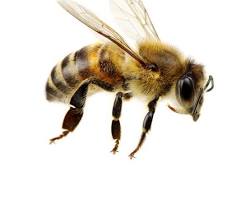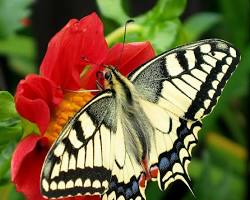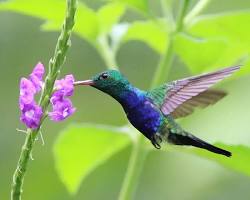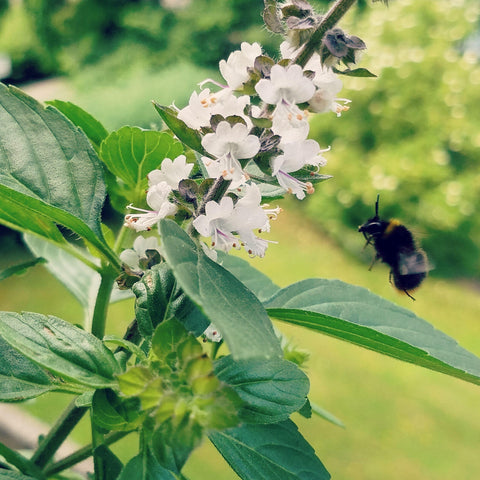Pollinators play a crucial role in maintaining ecosystems, facilitating the reproduction of flowering plants, and ensuring biodiversity. However, these essential creatures face alarming population declines due to various factors. In this comprehensive guide, we'll explore practical ways to create a pollinator-friendly garden, that supports bees, butterflies, and other vital pollinators.

Understanding Pollinators
Definition and role of pollinators
Pollinators are organisms that assist in the transfer of pollen from the male reproductive organs of a flower to the female reproductive organs, facilitating fertilization and the production of seeds and fruits.
Types of pollinators
Pollinators come in a diverse range of species, including bees, butterflies, moths, hummingbirds, beetles, and flies, each with unique characteristics and behaviors suited to their role as pollinators.
Importance of pollinator diversity
Maintaining a diverse community of pollinators is crucial for ecosystem health and resilience, as different species have specific preferences and requirements, ensuring effective pollination across a wide range of plants.
Creating a Pollinator-Friendly Garden
Selecting native plants
Native plants are adapted to the local environment and provide essential food and habitat for native pollinators, contributing to ecosystem health and stability.
Providing a variety of flowering plants
Offering a diverse array of flowers ensures a continuous supply of nectar and pollen throughout the growing season, supporting a wide range of pollinators with varying preferences.
Incorporating plants with different bloom times
By selecting plants with staggered blooming periods, you can attract and sustain pollinators from early spring to late fall, providing resources during critical times of the year.
Avoiding pesticide use
Pesticides, particularly insecticides, can harm pollinators directly or indirectly by contaminating their food sources. Opt for organic and pesticide-free gardening practices to protect pollinator populations.
Providing water sources
Pollinators need access to water for drinking and regulating body temperature. Incorporate shallow dishes filled with water or create small ponds to offer hydration options for pollinators.
Creating nesting habitats
Many pollinators, such as solitary bees and butterflies, require specific nesting sites to lay eggs and raise their young. Provide nesting materials like hollow stems, bare soil patches, and undisturbed areas for nesting.

Attracting Bees
Planting bee-friendly flowers
Choose flowers with vibrant colors and simple, accessible shapes that attract bees. Examples include lavender, sunflowers, and bee balm.
Providing shelter for solitary bees
Solitary bees, like mason bees and leafcutter bees, nest in tunnels or cavities. Install bee houses or leave areas of bare soil for these valuable pollinators to create nests.
Avoiding chemical pesticides
Minimize or eliminate the use of chemical pesticides in your garden to protect bees from harmful exposure, opting instead for natural pest control methods.
Attracting Butterflies
Planting host plants for caterpillars
Butterflies rely on specific plant species as host plants for their caterpillars to feed and develop. Research native host plants for butterfly species in your area and incorporate them into your garden.
Incorporating nectar-rich flowers
Butterflies are attracted to flowers with deep tubular shapes and brightly colored petals that provide ample nectar, such as milkweed, coneflowers, and verbena.
Creating butterfly puddling areas
Butterflies often gather in moist areas to extract minerals and salts from damp soil or puddles. Provide shallow dishes filled with sand, soil, and water to create puddling spots for butterflies.
Supporting Other Pollinators
Attracting hummingbirds
Hummingbirds are important pollinators attracted to tubular flowers with bright red or orange hues. Plant native flowers like trumpet vine, bee balm, and salvia to entice these agile flyers.
Providing habitat for beetles and flies
Beetles and flies, though often overlooked as pollinators, play significant roles in pollination. Incorporate a variety of flowering plants and decomposing materials to attract and support these beneficial insects.
Importance of considering all pollinators
Recognizing and valuing the contributions of diverse pollinators is crucial for maintaining resilient ecosystems and ensuring the pollination of a wide range of plant species.

Educating Others
Sharing knowledge with neighbors and the community
Spread awareness about the importance of pollinators and advocate for pollinator-friendly gardening practices within your community through workshops, social media, or community events.
Encouraging pollinator-friendly practices in public spaces
Collaborate with local authorities and organizations to promote the implementation of pollinator-friendly policies and practices in public parks, gardens, and urban landscapes.
Maintaining Your Pollinator Garden
Regular watering and weeding
Keep your garden well-maintained by watering plants during dry periods and regularly removing weeds to reduce competition for resources and maintain a healthy habitat for pollinators.
Monitoring for pests and diseases
Monitor your garden for signs of pest infestations or plant diseases, addressing issues promptly with eco-friendly solutions to prevent harm to pollinators and other beneficial insects.
Continuously adding diversity to the garden
Introduce new plant species and features to your garden over time, increasing biodiversity and enhancing its attractiveness to a wider range of pollinators.

Monitoring Pollinator Activity
Observing pollinator behavior
Spend time observing pollinator activity in your garden, noting the types of pollinators present, their behaviors, and their interactions with different plant species.
Keeping track of species diversity
Maintain records of the pollinator species observed in your garden, documenting changes in population numbers and diversity over time to assess the effectiveness of your gardening efforts.
Identifying signs of decline or distress
Stay vigilant for signs of pollinator decline or distress, such as reduced activity, population fluctuations, or abnormalities in behavior, and take action to address underlying issues promptly.
Conclusion
Creating a pollinator-friendly garden is not only beneficial for the environment but also a rewarding experience for gardeners. By implementing the strategies outlined in this guide, you can actively contribute to the conservation of pollinator populations while enjoying the beauty and abundance of a thriving garden ecosystem. Let's work together to support bees, butterflies, and other essential pollinators for a healthier planet.













